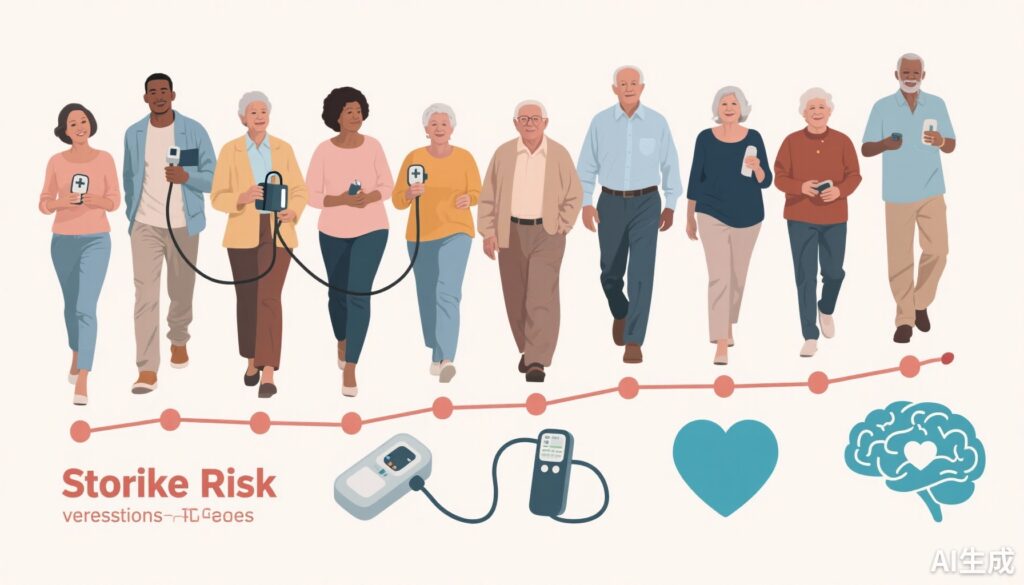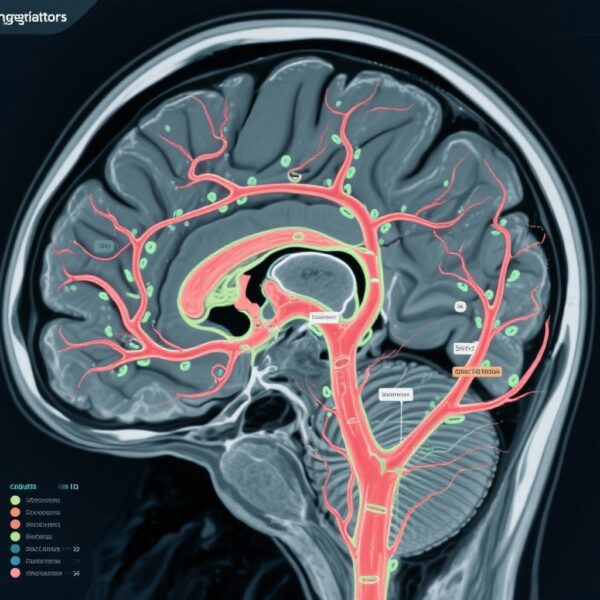Highlight
- Age significantly influences the prevalence and strength of association of vascular risk factors with acute stroke.
- Hypertension, high waist-to-hip ratio, and physical inactivity remain the top contributors to stroke risk across all age groups.
- Risk factors such as smoking, alcohol use, and psychosocial stress show reduced prevalence but varying influence on stroke odds with age.
- The INTERSTROKE findings can guide age-specific prioritization of stroke risk screening and intervention strategies globally.
Study Background
Stroke is a leading cause of death and long-term disability worldwide, with its absolute burden increasing as populations age. Notably, stroke incidence is rising among younger adults, representing an emerging public health challenge. Vascular risk factors such as hypertension, diabetes, smoking, and physical inactivity are well-established contributors to stroke risk. However, it remains unclear how the influence of these factors varies across different age groups. Understanding this relationship is crucial for tailoring risk stratification, prevention, and management strategies in diverse patient populations.
Study Design
INTERSTROKE is a large-scale, international case-control study assessing vascular risk factors associated with first acute stroke. Conducted across 32 countries between 2007 and 2015, the study enrolled 26,950 participants comprising cases with first acute stroke and controls matched by age and sex. Within 72 hours of recruitment, participants underwent clinical assessments and provided blood and urine samples. The investigators estimated odds ratios (ORs) and population attributable fractions (PAFs) for key vascular risk factors stratified by age groups. Importantly, statistical tests evaluated interactions between age and each risk factor regarding stroke association.
Key Findings
The mean age for stroke cases was 62.2 years, and for controls, 61.3 years. The study identified significant age-related trends in the prevalence of vascular risk factors:
– Prevalence increased with age for hypertension, physical inactivity, diabetes, atrial fibrillation, high waist-to-hip ratio, elevated apolipoprotein B levels, and obesity.
– Conversely, smoking, alcohol use, psychosocial stress, and unhealthy diet prevalence declined with advancing age.
– Depression prevalence did not significantly vary by age.
Age also modified the magnitude of association between vascular factors and acute stroke:
– Hypertension showed a declining odds ratio with increasing age (pinteraction <0.0001), although it remained a leading contributor to stroke risk.
– High apolipoprotein B concentration, high waist-to-hip ratio, alcohol consumption, and psychosocial stress similarly exhibited reduced odds ratios with older age.
– No vascular risk factor was associated with an increased risk as age advanced, indicating a general attenuation of relative risk relationships.
Importantly, hypertension, high waist-to-hip ratio, and physical inactivity contributed the largest PAFs for stroke across all age strata, underscoring their central role in stroke prevention throughout life.
Expert Commentary
This study provides valuable insights into the dynamic interplay between age and vascular risk factors in acute stroke pathogenesis. The attenuated relative risks with age for some factors may reflect competing risks, survivor bias, or age-related physiological changes modifying the impact of these risks. Clinically, these findings emphasize that while the prevalence of some risk factors increases with age, their relative influence on stroke risk may diminish, supporting age-adjusted prioritization in risk management.
Limitations of the study include its case-control design, which is susceptible to recall bias, and potential heterogeneity across international populations. However, its large multinational sample size enhances generalizability. Future research should explore underlying mechanisms for age-related risk modulation and test age-tailored intervention efficacy.
Conclusion
The INTERSTROKE study compellingly demonstrates that age significantly modifies both the prevalence and relative impact of vascular risk factors in acute stroke. Despite reduced odds ratios with age for several factors, hypertension, abdominal obesity, and physical inactivity remain dominant stroke risk contributors at all ages. These findings underscore the importance of developing age-specific strategies for screening and modifying vascular risk factors to optimize stroke prevention. Clinicians and public health policymakers should integrate age considerations into risk assessment models and intervention programs to more effectively reduce the global stroke burden.
Funding and Clinical Trials Registration
The INTERSTROKE study was funded by multiple organizations, including the Canadian Institutes of Health Research, Heart and Stroke Foundation of Canada, Canadian Stroke Network, AFA Insurance, Health Research Board Ireland, Swedish Research Council, Swedish Heart and Lung Foundation, Region Västra Götaland (Sweden), AstraZeneca, Boehringer Ingelheim (Canada), Pfizer (Canada), MSD, Chest, Heart, and Stroke Scotland, and The UK Stroke Association. No specific clinical trials registration number is reported.
References
Reddin C, Hankey GJ, Ferguson J, Langhorne P, Oveisgharan S, Canavan M, Iversen HK, Rosengren A, Ryglewicz D, Czlonkowska A, Wang X, Lanas F, Damasceno A, Xavier D, Lopez-Jaramillo P, Smyth A, Yusuf S, O’Donnell M; INTERSTROKE investigators. Influence of age on the association of vascular risk factors with acute stroke (INTERSTROKE): a case-control study. Lancet Healthy Longev. 2025 Jun;6(6):100709. doi: 10.1016/j.lanhl.2025.100709. Epub 2025 Jul 2. PMID: 40617250.



